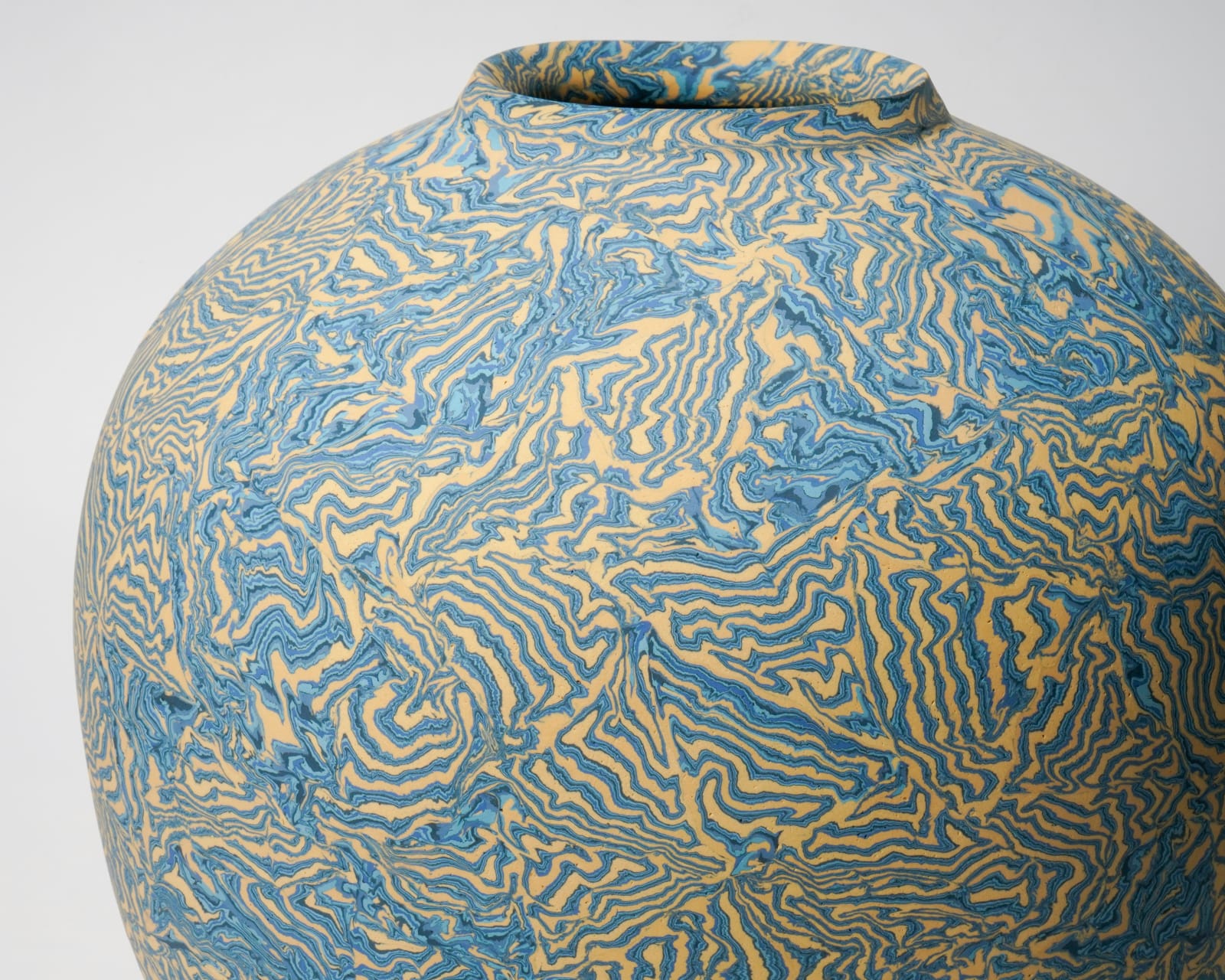Matsui Kosei 松井康成 1927-2003
H29.8 x Dia31.2 cm
Further images
Matsui Kosei (1927-2003) stands alone among Japanese ceramists in his absolute mastery of the marbling or neriage technique for which he was designated in 1993. The three vases in the exhibition show progressively finer clay mixtures but other vases by him take this to almost a minute difference between the layers. Similarly, some of his pots have a coarse surface, reflecting the different clays in the mixtures, whereas others have a smooth surface that creates an intriguing multi-dimensional optical effect as the colours of the clay advance or recede. Whatever style he chooses the end result was always a visually challenging and simultaneously intriguing pot.
Matsui has honed the Neriage style to its zenith. “Neriage”, or agateware is known for its swirling colorful clays that layer over each other. It originated in Tang China (7th-10th century) and was imported to Japan during the a period of technological exchange as a result of medieval maritime trade. The neriage technique requires extreme precision in combining sheets of different types of clay to create the desired decorative effect in a single coherent piece. Each type of clay has its own unique properties of color, form, and texture, and only an experienced artist may bring them together in a unified style. His pleasure in the technique led to constant innovation as he continually travelled to collect new ideas for his work.













